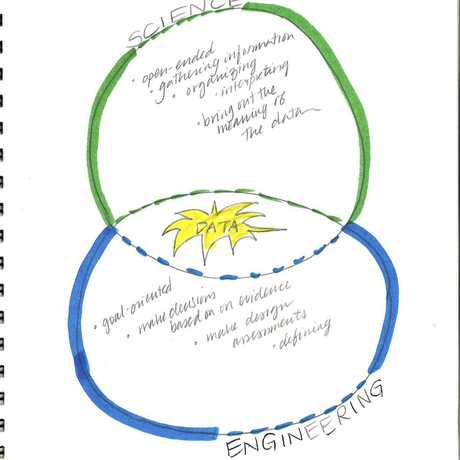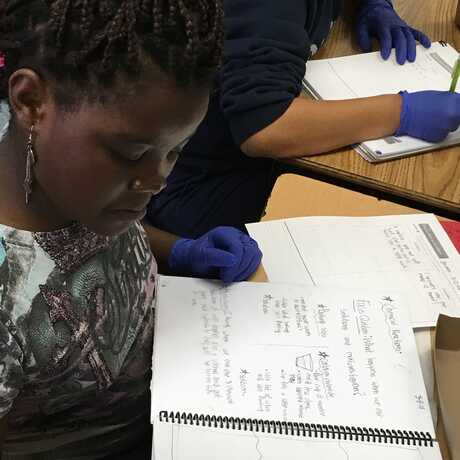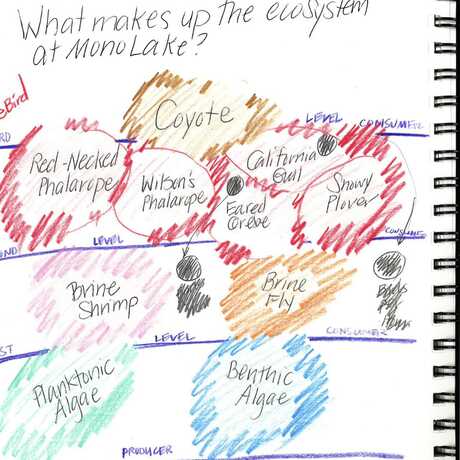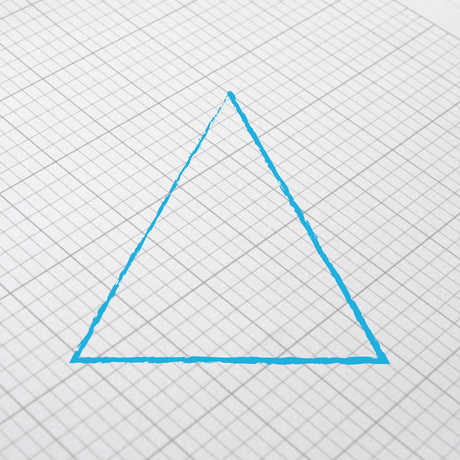

Have you used notebooks to help your students understand science texts? Activate students’ relevant prior knowledge, help students monitor and improve their own reading comprehension, or provide structures for students to organize their understanding after reading.
About This Guide

Below, you’ll find guidance related to using the science notebook for active reading, including:
- Before-reading strategies
- During-reading strategies
- After-reading strategies
Because we know teachers appreciate seeing the results of using these strategies, we've also created an example gallery containing student work.
Before-Reading Strategies

Use these Reading in Science strategies from the SERP Institute before reading to activate students’ relevant prior knowledge.
- Students can complete an Anticipation Guide in their notebooks, where they respond to True or False statements before reading a text.
- Another option is a Picture Walk, where students scan a text looking only at the pictures, and make a prediction in their notebook describing what they think the text will be about. [i]
During-Reading Strategies

Use these strategies to help students monitor and improve their comprehension. These strategies often involve re-reading and coding text.
- For example, if students were reading a text about the living and nonliving parts of an ecosystem, they could use two different colors to highlight the living and nonliving parts as they read. They could then create a chart of the living and nonliving parts of an ecosystem in their notebook.
- Another strategy, “3,2,1” asks students to create a note-taking scaffold they will fill in as they read. For instance: 3 things that stand out to you in the text, 2 things the text reminds you of, and 1 thing you don’t understand. [ii]
After-Reading Strategies

Students will use these strategies from the SERP Institute after reading to organize and distill their understanding.
- One idea is to have students return to the Anticipation Guide and add a new column where they re-answer the True and False statements, citing evidence from the text.
- Another post-reading option is the Frayer Model. Instruct students to write a key concept from the reading in the center of one notebook page, and then draw a grid with 4 quadrants. The upper left quadrant is for a definition of the term. The upper right quadrant is for characteristics. The lower left quadrant is for examples. The lower right quadrant is for non-examples. [i]
How to Make it Happen
- Active reading takes more time. Make sure to leave enough time for students to truly engage with the text.
- Choose one or two active reading strategies and use them early and often. When students are familiar with the routines, they will get more out of them.
- Use the same reading strategies across subject areas – they are not limited to science.
Notes from the Classroom
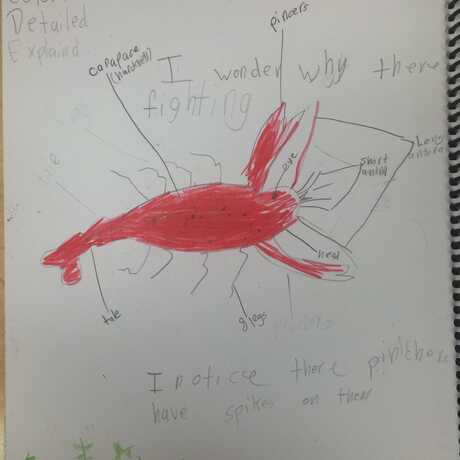
Emily was teaching a fourth grade unit on crayfish adaptations. She wanted her students to observe the live crayfish in their class and make predictions about their anatomy before reading about the species.
She had students create a 3-column chart in their notebooks. The first column was for Structures students noticed on the crayfish. In that column, students sketched and described things like antennae, tail, claws, etc. The second column was for Function. In this column, students made predictions about how the various structures helped the crayfish survive. They filled out these first two columns while observing the crayfish for about 25 minutes.
Then, students read a short text on crayfish anatomy. They added a final column to their chart, labeled “After reading, I think…” In this last column, they described the function of each structure, according to the text.
Emily reported that her students were much more engaged in the reading because they had done so much observation and thinking beforehand. They were eager to find out if the text would confirm their predictions.
References
[i] These strategies are described by Reading to Learn in Science, a collaboration of the SERP Institute and faculty from Stanford University.
[ii] This strategy and others can be found in Project Zero's Thinking Routine Toolbox, a resource of Harvard University's Graduate School of Education.

Science Notebook Corner
Learn how notebooks can help your students think and act like scientists.
